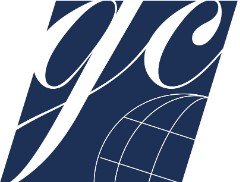China’s global vaccination plan a cause for optimism and concern amid roll out
While Canada eagerly awaits the arrival of millions of doses of COVID-19 vaccines from companies such as Moderna, Pfizer-BioNTech, and AstraZeneca, dozens of other countries are depending on China for the vaccines necessary to pull their nations out of the pandemic.
Chinese vaccine-makers have pledged around 500 million vaccines to more than 45 countries and have already delivered 21 million doses. Foreign Ministry spokesperson Wang Wenbin also confirmed in early February that the Chinese government would donate 10 million coronavirus vaccine doses to the COVAX global program.
China is being hailed as a hero by the nations that have received their share of vaccines. After a supply arrived in Santiago, Chile’s president Sebastián Piñera called the delivery “a day of joy, emotion, and hope.” And after the Philippines received a delivery of 600,000 vaccinations on March 1, a presidential spokesperson said that President Rodrigo Duterte felt a “debt of gratitude” to China for the vaccinations, adding that the arrival “cannot be quantified in money terms.”
Vaccines, the bulk of which are labeled Sinovac and Sinopharm, are slated to begin steadily streaming into airports from Zimbabwe to Serbia in the next few weeks. Both require a two-shot dosing system and are inactivated vaccines containing killed viral particles which trigger an immune response. This is unlike the mRNA technology used in the Pfizer and Moderna vaccines.
China stated that it considers the vaccine a “public good,” necessary for low- and middle-income nations who are unable to secure supplies of the Western-developed vaccines. As one Egyptian official noted, “vaccines, particularly those made in the West, are reserved for rich countries. We had to guarantee a vaccine. Any vaccine.”
However countless questions still exist regarding the vaccines themselves, and the motives behind their dispersion.
Members of the global health community are possibly most concerned about the intent of the distribution. Krishna Udayakumar, director of the Duke Global Health Innovation Centre, worries that the Chinese are ushering in an era of “vaccine diplomacy.” China’s countless supply agreements appear to be extending the nation’s influence abroad, a strategy which demonstrates the increasing importance of soft power in recent years.
China’s vaccine policy is also consistent with the Belt and Road Initiative, a state-sponsored investment initiative created in 2013 with the goal of funding infrastructure development in over 72 nations. Such ‘good-will’ investments, often issued with few or no strings attached, have significantly boosted China’s global image. After his nation received a donation of 200,000 vaccine doses from China, Zimbabwean President Emmerson Mnangagwa stated, “we feel greatly honored, and this speaks volumes to the relationship between us and the people of China.” No doubt other nations are feeling the same way.
China may also be trying to court the global community in an attempt to redirect the negative perceptions it garnered at the beginning of the pandemic. Many countries have grown skeptical of China after it grossly mishandled the initial outbreak of the virus. A recent Pew Research survey also found growing distrust from African and European countries. The former appears to be especially important to China’s economic outlook, as Sino-African trade surpasses $200 billion USD per year. China has shown reliance on low- and middle-income countries in global politics as well, cementing the nation’s influence in the region.
Questions have arisen regarding the safety and efficacy of the vaccines, both in China and abroad. Despite vaccination rollout beginning domestically in China in July, vaccinations are in the arms of only 2.9 people per 100 residents, lagging behind the rates of the UK, US, and EU. The reason for this low inoculation rate appears to be twofold. The Sinovac and Sinopharm vaccines are solely recommended for individuals in good health between the ages of 18 and 59—a concern considering the immuno-compromised and elderly have the highest risk of morbidity should they contract the virus. In fact, it appears that the companies never even tested the vaccine on people over the age of 59.
Frontline health workers are also reluctant to take the vaccine. One Chinese medical journal found that only 28 per cent of medical personnel in Zhejiang province were prepared to be inoculated. One common reason for the negative response was the possibility of negative side effects. As one Beijing doctor noted, “We know so little about the vaccine, and there’s a lack of evidence to support its safety and efficacy.”
Anxieties about efficacy have also manifested at the global level. Sinovac was initially tested in small clinical trials in Turkey and Brazil and, while many questioned the evidence, labs found the vaccines to be extremely effective (with over 90 per cent efficacy in the Turkish trial). Jean Gorinchteyn, the Brazilian state of Sao Paolo’s health secretary, touted the result, saying, “today is a historic day for science and for Brazilian health. This will allow us to save the lives of millions of people.”
However, soon after Brazil’s Butantan Institute revoked its statement, claiming that the Brazilian results excluded data that would have shown an efficacy rate of 50.4 per cent. This startling finding does not appear to have deterred use of the vaccine, with injections commencing in over 25 countries after the study results were published. Sinopharm, the other major Chinese manufacturer, claimed that interim trials showed the vaccine to be 79 per cent effective; however, no evidence was ever provided to support that claim, as the company did not respond to requests for an interview.
Despite the lingering questions regarding the efficacy and safety of the vaccinations, millions of doses are being exported each day from Chinese airports and will be in the arms of people around the world in the coming weeks. Only time will tell what the political ramifications of China’s vaccine diplomacy will be—and whether the nation can make up for its damaged image.

